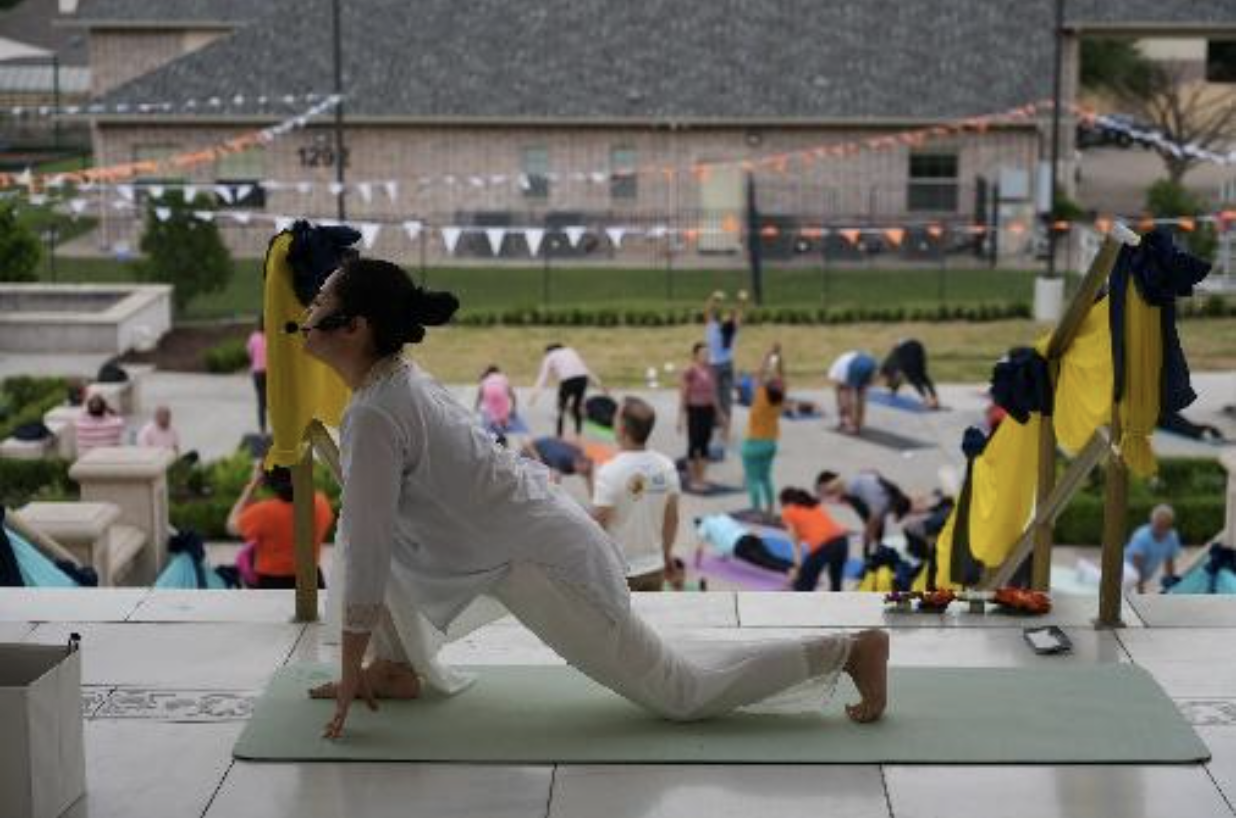The International Yoga Day 2024, observed on June 21st, aims to raise awareness worldwide of the many benefits of practicing yoga. Despite its Hindu origins, yoga has evolved into a universally practiced discipline that attracts people of various faiths and cultural backgrounds. The United Nations acknowledged this global event in 2014, emphasizing yoga's profound benefits for physical, mental, and spiritual well-being.
Meaning of Yoga
Yoga in common terms usually refers to a series of physical exercises that focus on improving bodily functions. However, the traditional system of yoga offers so much more than just physical improvement.
The term Yoga originates from the Sanskrit word 'Yog' and its literal translation is "to unite". Put very simply, Yoga is a practical discipline on how to live life to minimize distractions, suffering, optimize your physical, mental, and emotional state, and to realize the purpose of life, which is the union of individual consciousness with the Supreme consciousness.
Watch Swami Mukundananda explain the meaning of yoga.
International Yoga Day 2024 - Understanding the Meaning of yoga
Experience the most amazing yoga festival at the Radha Krishna Temple of Dallas on the International Yoga Day 2024.
Also check: How to celebrate International Yoga Day 2024
Science behind Yoga
Unlike the modern medicine which often treats symptoms with medication, the ancient Vedic wisdom suggests that disease is often a symptom of an underlying imbalance and impurity within these five sheaths of our personality.
These five sheaths (Koshas) or layers include - Physical, Vital, Mental, Intellectual and Bliss. Yoga, as informed by Vedic wisdom, focuses on addressing the root causes of imbalances that may manifest as disease.
Yoga prescribes specific techniques for tackling imbalances in each of these five sheaths (koshas) to promote overall well-being.
Physical body (Annamaya kosha) Physical Yoga postures (asanas) help maintain the physical body by keeping muscles, ligaments, and organs active. They also act as a form of aerobics, strengthening muscles and improving joint function. Additionally, specific postures can stimulate and tone internal organs.
Vital energy sheath (Pranmaya Kosha) Pranayama, yogic breathing practices, improve oxygen flow throughout the body and tap into the vital energy force (prana) from the atmosphere.
Mental sheath (Manomaya Kosha) If the mind is disturbed, it will cause issues at the Vital and Physical levels. The mental issues have to be addressed by purifying the mind. The technique prescribed for purifying the mind is meditation.

Intellectual Sheath (Jnanamaya Kosha) According to ancient Yogic science, the root cause of mental imbalance is lack of knowledge and incorrect beliefs and values in our intellect. The intellect needs to be purified by accessing divine and transcendental knowledge that illumines our intellect.
Bliss Sheath (Anandmaya Kosha) Scriptures around the world from all religious traditions are aiming at removing the cobwebs of the intellect. We determine our values based upon where we have decided happiness lies. So the decision needs to be made where is happiness and this requires correct understanding of Who am I.
Also check: Prem Yoga, a comprehensive yoga system envisioned by Swami Mukundananda comprising of wellness, devotion and service.
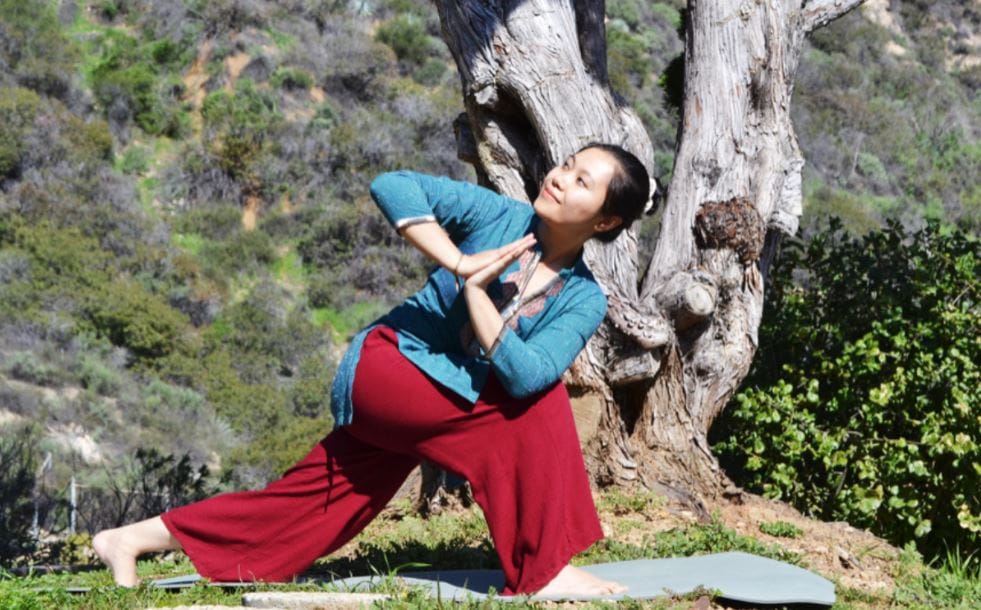
Benefits of Yoga
Yoga, with its wide range of advantages, is a valuable practice that promotes holistic well-being and is suitable for individuals of all ages and backgrounds. Yoga is versatile and can be customized to accommodate different fitness levels and abilities.
At the physical level, yoga can help improve flexibility, strength, balance and coordination and pain management.
At the mental level, yoga can effectively manage stress and anxiety and improve focus and concentration. Yoga encourages mindfulness and self-awareness, leading to a more positive outlook on life and enhanced emotional well-being. Studies have shown that regular yoga practice can lead to better sleep quality and improved sleep patterns.
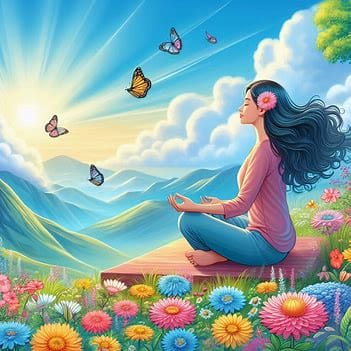
Still deeper at the spiritual level, oyga encourages introspection and self-reflection, aiding in a deeper understanding of oneself. Through practices like meditation, yoga cultivates inner peace and a sense of calmness.
As we prepare for International Yoga Day 2024, let's inspire ourselves to incorporate yoga into our routines for enduring positive effects.
Significance of Yoga in the age of stress: In modern times, many yoga practitioners are looking for relief from stress. Stressors can come from various sources such as school, work, family, financial issues, sleep deprivation, health problems, mental health issues, difficulty focusing, lack of time, illness or loss of loved ones, marital problems, or social anxiety, among others.
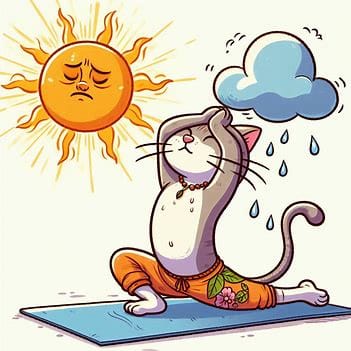
Ideally, yoga provides a dedicated time to detach from stressors, allowing the body, mind, and soul to recharge and better cope with inevitable stressors. Specifically:
- Yogasans help stretch the muscles and produce stamina in the body. These can help improve strength, flexibility, and posture.
- Pranayams are breathing exercises intended to improve the flow of pran, or the life energy, within us. They enhance lung capacity, resulting in more oxygenation and energized blood, which in turn improves blood circulation which in turn calms the mind.
- Dhyan is meditation, which helps us focus our mind, understand how the mind works, and suppress negative thought patterns. These allow us to become focused, confident, open-minded, and sincere. The purest form of Dhyan is Roopdhyan, where one takes the Supreme as the object of meditation.
- Subtle body relaxation and shatkarm help cleanse the body and mind and thus result in the development of a healthy overall personality that helps with stress management.
While the benefits of yoga are undeniable, the ultimate goal in Vedic tradition is to connect with the divine essence within ourselves and the universe. Through yoga practices, individuals can cultivate a sense of wholeness and inner peace.
Also check: Yoga For The Body, Mind and Soul by Swami Mukundananda
The Ancient Origins of Yoga
As we look in the documented history, yoga has been glorified in several Vedic texts including the Bhagavad Gita. Hundreds of seals and statues have been excavated at prehistoric places showing Yogasans being performed in India many millennia before the arrival of western civilization. The knowledge of yoga from the Vedas was passed down through generations orally until approximately 400 BC when the sage Patanjali wrote them down. He wrote 196 verses describing the system of yoga. In it, he himself describes yoga as “restriction of the perturbations of the mind”. These were broken up into eight steps:
- Yama (Ethical Observances): Cultivating universal moral principles like non-violence, truthfulness, non-stealing, and moderation.
- Niyama (Self-Discipline): Observing personal disciplines like cleanliness, contentment, austerity, study, and devotion to God.
- Asana (Physical Postures): Physical postures designed to strengthen, balance, and purify the body.
- Pranayama (Breath Control): Controlling the breath to regulate the flow of energy (prana) within the body.
- Pratyahara (Sense Withdrawal): Turning the inward focus of the mind.
- Dharana (Concentration): Focusing the mind on a single point.
- Dhyana (Meditation): A state of effortless awareness.
- Samadhi (Absorption): A state of complete union with supreme consciousness

In essence, Maharishi Patanjali's Ashtang Yog can be defined as a path consisting of eight steps leading to the realization of God. The first five steps (Yama, Niyama, Asana, Pranayam, Pratyahara) are related to the body and the last three steps (Dhahran, Dhyana and Samadhi) are for the mind.
So, if you are inspired to begin your yoga practice on the International Yoga Day 2024, pause and reflect on the profound history of the tradition of yoga. By engaging in this practice, you're not only stretching your body, but also tapping into an ancient tradition that has guided millions of people in their pursuit of peace and harmony.
Ultimately, Yoga is a journey of self-discovery. Through introspection, meditation, and ethical living, individuals gain a deeper understanding of their true selves and their place in the universe. Once the union (yoga) of individual consciousness and the Supreme consciousness takes place, all elements of the individual's personality converge to create a state of optimal health across physical, mental, emotional, social, and spiritual dimensions. On the International Yoga Day 2024, let find inspiration to embrace oyga for health, wellness and joyful living.
Examples of Yogasanas
Surya Namaskar, also known as the sun salutation, is one of the most renowned and advantageous Yogasans. As a certified yoga practitioner, hosting a community Surya Namaskar session would be an excellent way to raise awareness for yoga on the International Yoga Day 2024.
Surya namaskar is usually done at both sunrise and sunset, but it can be practiced at any time when the stomach is empty. It includes many postures where the spine is curved backward, which offsets the natural inclination in the modern world to slouch or bend the spine forward. It stretches and tones many of the joints and muscles in the body. It massages the internal organs, encouraging them to secret their hormones and digestive juices.
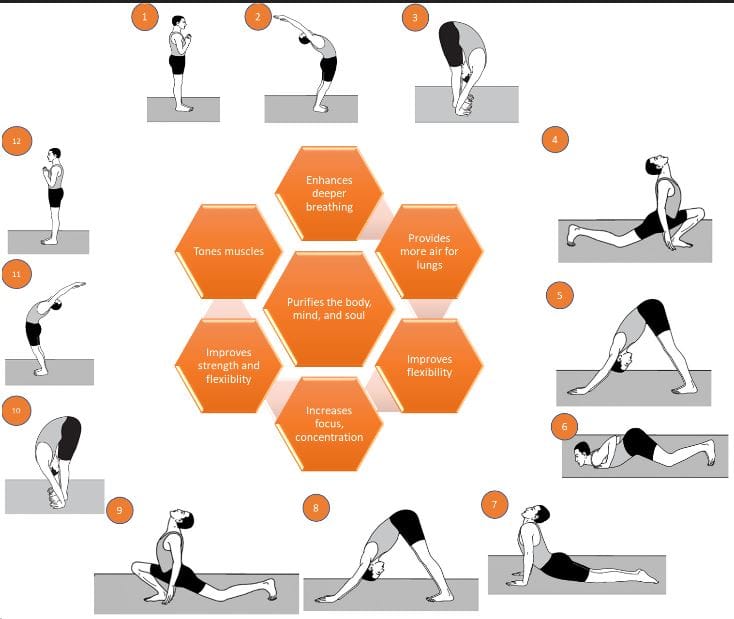
Namaskar Asan (Prayer Pose) - The sequence starts with a standing pose with both feet together. The hands move from the sides to join at the center of the chest in a prayer pose. At this point, visualize the Sun before you.
Hasta Utthanasan (Raised Arms Pose) - While inhaling, the arms are raised high (next to the ears) above the head. The trun reclines, while the arms and finger are fully extended. The spine should form a mild curve. This is one of the many backwards-curving postures in this sequence.
Pada Hastasan (Hand to Foot Pose) - Exhale, and bend forward to touch the knees with the forehead. Try to place the hands on the floor next to your feet, locking the knees.
Ashwa Sanchalanasan (Equestrian Pose) - Inhale, bend your left leg, and stretch the right leg back, while looking up. The palms should remain on the floor on either side of the left foot. Push the pelvis forward, and the head should fall back, forming a curve with the spine.
Parvatasan (Mountain Pose) - Exhale, move the left foot back, beside the right foot. Push the heels into the floor, and raise the buttocks. Push the palms into the floor and lower the head. Try to look at your feet.
Ashtang Namaskar (Salute with Eight Parts/Points) - Retain the breath, fold your arms, so that you touch the floor with eight points (chin, hands, chest, knees, feet. Look straight ahead, and raise the buttocks off the floor.
Bhujangasan (Cobra Pose) - Inhale, lower the buttock to the floor, arch the back, straighten the elbows, and raise the head, while tilting it backward
Parvatasan (Mountain Pose) - Exhale. This is the same posture as step 5
Ashwa Sanchalanasan (Equestrian Pose) - Inhale, and repeat step 4, but now with your right foot forward and left knee on the floor.
Pada Hastasan (Hand to Foot Pose) - Exhale, and repeat as in step 3.
Hasta Utthanasan (Raised Arms Pose) - While inhaling, the arms are raised high (next to the ears) above the head. The trun reclines, while the arms and finger are fully extended. The spine should form a mild curve. This is one of the many backwards-curving postures in this sequence.
Namaskarasan (Prayer Pose) - Inhale, similar to step 1, and bring your hands back together to a prayer pose.
Participate in the 108 Surya Namaskar on International Yoga Day 2024 at the Dallas Yoga Fest.
Become a Certified Yoga Teacher - JKYog Prem Yoga Teacher Training Academy
FAQ: International Yoga Day 2024 - June 21st
What is International Yoga Day?
International Yoga Day is a global event celebrated annually on June 21st. It's a day to recognize and appreciate the unifying power of yoga and its numerous benefits for physical and mental well-being.
What's the theme for International Yoga Day 2024?
The theme for 2024 hasn't been announced yet. Past themes have focused on aspects like harmony, peace, and climate action.
Why is June 21st chosen for International Yoga Day?
June 21st coincides with the summer solstice in the Northern Hemisphere, symbolizing balance and renewal – principles central to ooga practice.
When did International Yoga Day begin?
The idea originated with Indian Prime Minister Narendra Modi in 2014 and was adopted by the UN General Assembly that same year.
What is the history of Yoga?
Yoga's roots go back thousands of years, possibly to the Indus Valley Civilization (3300-1300 BCE). Early references appear in ancient Indian texts like the Vedas.
How can I observe International Yoga Day?
There are many ways! Participate in mass yoga sessions, attend workshops, explore online resources, or simply incorporate some yoga practice into your day.
For ideas on how to get involved and celebrate International Yoga Day 2024 check here.
Celebrate International Yoga Day at the Dallas Yoga Fest
What are the benefits of Yoga?
Yoga offers a wide range of benefits, including improved flexibility, strength, balance, and stress reduction. It can also enhance mood, focus, and sleep quality.
Is Yoga a religious practice?
Yoga's philosophical roots lie in Hinduism, but it has become a secular practice enjoyed by people of all faiths and backgrounds.
What are some of the popular Yogasans?
One of the most famous and beneficial of the yogasans is Surya Namaskar, or the sun salutation. (Surya means ‘the sun’ and ‘namaskar’ means ‘the act of paying Namaste with folded hands’). The process of saluting the Sun symbolizes the process of showing respect for a higher entity.
What is Pranayam?
Pranayams involve breathing exercises to activate and energize the pran (or life-energy) in the body. Every time we take in oxygen, we also take in this pranic energy that pervades the entire universe and gives living things their energy. A hectic and stressful lifestyle depletes this pranic energy and blocks new pran from entering the body. This can manifest in organ and muscle ailments. Pranayams aims to restore the balance and flow of pran.

